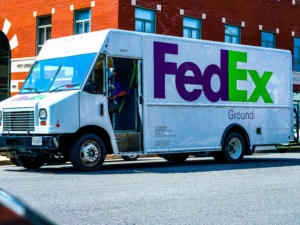We’ve highlighted everything a shipper needs to know, plus your free rate comparisons
This week, as expected, UPS announced “an average” General Rate Increase (GRI) of 6.9% for 2023, which matches the average GRI increase that FedEx announced back in September. As with previous years, UPS’s rate increase will take effect a week earlier than FedEx (December 27, 2022 vs. the FedEx increase which takes effect on January 2, 2023.)
As always, it is imperative that shippers do not take these communicated increase levels at face value, as these are purely averages. Historically, the impact to shippers has been vastly different from the average increases that the carriers have announced. We have seen many companies use carrier announced average rate increase amounts in their budgeting and projection processes. This could be a major mistake, since it is not uncommon for the actual increase in cost for shippers to be far greater than the announced percentages. So, failure to fully understand and analyze the impacts of these GRI’s can have a major impact on company profits and bottom lines.
Breaking it all down
By now we know that the increases that carriers put in place vary across their rate cards. Often the average increase amount is driven by higher increases in lighter weight / lower zone packages, offset by lower increases in higher weight/ higher zone packages. So, it is critical for shippers to know where their average package weights and zones fall to understand this aspect of carrier rate increases.
Here are our key findings related to the UPS Package increases for 2023 courtesy of Laura Schwier, ICC Logistics’ President:
- There are some very interesting increases scheduled for 2023. For example, both FedEx and UPS increased the zone 205, 2Day air rates by 8.9%, while the rest of the zones averaged 7.5%.
- For UPS, the Ground minimum charge increased 7.9% compared to last year’s 6.8%. In dollars and cents, the charge went from $9.36 to $10.10.
- Almost all of the averages are higher than the 6.9% stated in the UPS announcement, but that’s usually what happens.
- As always, the 3 Day Select pricing is less expensive than the Express Saver Pricing, so these variances are of no surprise.
The UPS rate increases seem to be in line with where FedEx increased their rates as can be seen in the comparison of the FedEx and UPS 2023 vs. 2022 Rate Increase Charts which are available below to our readers by clicking the link below.
FedEx List Rates 2023 vs UPS List 2023 Chart
Surcharges and Other Rate Changes
Additionally, we have determined that it is equally important to pay close attention to carrier Accessorial Rate and Rule changes due to the impact that these can have. Back on October 6th, we published a blog that called out changes that both UPS and FedEx had made to their Delivery Area/ Extended Area surcharges. For 2022, UPS had created this new category of Delivery Area Surcharges for what they consider “Remote Areas.” FedEx jumped on the band wagon with this for 2023 as well.
With this, both carriers have moved Zip Codes from their list of locations that received Delivery Area or Extended Delivery Area surcharges, to this new, higher priced surcharge category, (FedEx’s rate for Remote Destinations is $13.25, UPS’ 2023 rate is $13.05). This is a significant increase in costs for shipments to these zip codes, in some cases, as much as 300%!) In addition, UPS added approximately 500 new zip codes to their list of approximately 2700 Remote Area zip codes from 2022 (now a total of approximately 3200 for 2023). FedEx has almost 4000 zip codes that will receive this new Surcharge in 2023.
On top of this, for 2023, UPS has increased their rates for Delivery Area/ Extended Delivery Areas. The published Delivery Area/ Extended Delivery Area Surcharge Rate for Ground Residential shipments will increase from $4.80/$6.50 to $5.30/ $7.15. This equates to an increase of over 10%. So, it is obvious where the trend is going with these surcharges.
FedEx Fee & Surcharge Rates 2023 vs 2022 Chart
UPS Fee & Surcharge Rates 2023 vs 2022 Chart
A Note About Rate Caps
It is also important to note that shippers that have Rate Caps in place with parcel carriers, are often not protected from Accessorial rate increases or rule changes. Typically, Rate Caps are only applied to shippers’ Package Rates and Discounts. Accessorial rate increases are usually not limited by contractual Rate Caps. Also, in many cases, existing discounts do not apply to newly added surcharges. For example, a shipper with existing discounts on Delivery Area/ Extended Delivery Area Surcharges will not automatically receive these discounts for the newly added Remote Area Surcharge. So, it is important that shippers don’t assume that the terms of their current carrier agreements protect them from the ongoing barrage of Accessorial Rate increases and rule changes.
UPS’ GRI Information Still Unclear
In their GRI announcement, UPS also states “The list of ZIP codes aligned to certain zones will change”. At this point, there are no details that allow us to gauge the full impact of this. However, ICC will continue to monitor this situation, and communicate our findings. Obviously, this could be another scenario that could have a serious impact on shipper’s costs.
A few other items related to the UPS GRI announcement that are worth mentioning-
- UPS has not yet announced Rate Changes to their SurePost product. So, please stay tuned for details of this.
- They have announced a change in verbiage related to “Peak Surcharges”. The announcement indicated that “Peak/Demand Surcharges will also be referred to as Demand Surcharges.” This is an interesting change, and suggests that UPS might be looking to create additional flexibility when/ where they can put these surcharges into effect.
- It will be interesting to see how the UPS Teamsters utilize these record Rate Increases in their 2023 contract negotiations with UPS. Historically, Teamsters have seen wage increases far below the 6.9% GRI increase that was just announced. This could create some interesting leverage for the Teamsters.
In order to determine the true impact that these announced GRI’s have on total cost, shippers need to fully understand their shipment characteristics. Shippers must be empowered with ongoing reporting and analytics that can help them make important decisions related to product pricing and overall shipping costs. Inaccurate projections related to increased shipping costs will lead to serious profit margin erosion.
Be In the Know
Find the FedEx and UPS List Rate Comparison Charts for 2022 vs 2023 below by clicking the links provided:
FedEx List Rates 2023 vs 2022 Chart
UPS List Rates 2023 vs 2022 Chart
Remember, you are NOT alone! Reach out to ICC to find out how we can provide you with the information and tools you need to protect yourself from unforeseen impacts on your bottom line. We’re here for you every step of the way.












